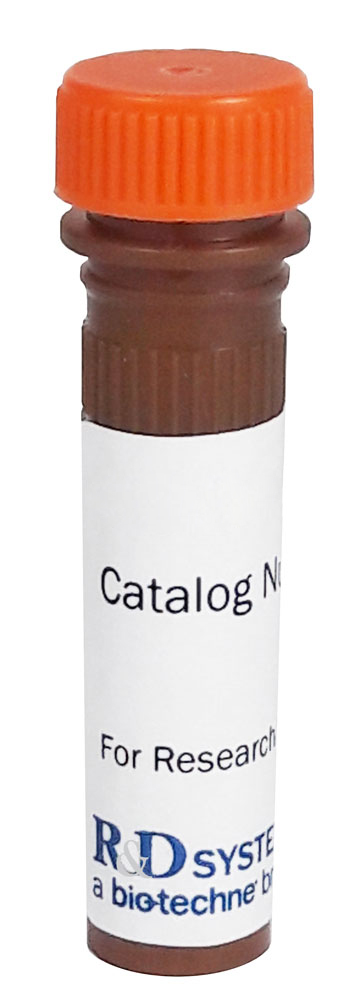Human EGLN3/PHD3 Antibody Summary
Pro2-Asp239
Accession # Q9H6Z9
Customers also Viewed
Applications
Please Note: Optimal dilutions should be determined by each laboratory for each application. General Protocols are available in the Technical Information section on our website.
Scientific Data
 View Larger
View Larger
EGLN3/PHD3 in A549 Human Cell Line. EGLN3/PHD3 was detected in immersion fixed A549 human lung carcinoma cell line, untreated (lower panel) or treated (upper panel) with CoCl2, using Mouse Anti-Human EGLN3/PHD3 Monoclonal Antibody (Catalog # MAB6954) at 10 µg/mL for 3 hours at room temperature. Cells were stained using the NorthernLights™ 557-conjugated Anti-Mouse IgG Secondary Antibody (red; Catalog # NL007) and counterstained with DAPI (blue). Specific staining was localized to nuclei and cytoplasm. View our protocol for Fluorescent ICC Staining of Cells on Coverslips.
Preparation and Storage
- 12 months from date of receipt, -20 to -70 °C as supplied.
- 1 month, 2 to 8 °C under sterile conditions after reconstitution.
- 6 months, -20 to -70 °C under sterile conditions after reconstitution.
Background: EGLN3/PHD3
Egl nine homolog 3 (EGLN3), also known as PHD3, is a widely expressed 27 kDa enzyme that hydroxylates proline residues on target proteins including HIF-1 alpha. HIF-1 is an alpha / beta heterodimeric transcriptional activator that upregulates genes involved in mitigating the effects of hypoxia. Normally, and in the presence of abundant oxygen, the HIF-1 alpha -chain is hydroxylated by PHD family members, which results in its ubiquitylation and degradation. Under low oxygen tension, EGLN3 activity is decreased, the HIF-1 alpha subunit is retained, and HIF-1 activates genes. EGLN3 also hydroxylates and promotes the degradation of the beta -2-adrenergic receptor, promotes myogenic differentiation, promotes apoptosis via caspase activation, and blocks tumor angiogenesis. EGLN3 forms homomultimers and heteromultimers with other EGLN proteins, and this is enhanced during hypoxia. EGLN3 contains one iron 2-oxoglutarate (Fe2OG) dioxygenase domain (aa 278-376), an iron-binding site (Asp 137 and His196), and a 2-oxoglutarate-binding site (Arg205). Within aa 2-239, human EGLN3 shares 97% aa sequence identity with mouse and rat EGLN3.
Product Datasheets
FAQs
No product specific FAQs exist for this product, however you may
View all Antibody FAQsReviews for Human EGLN3/PHD3 Antibody
Average Rating: 5 (Based on 1 Review)
Have you used Human EGLN3/PHD3 Antibody?
Submit a review and receive an Amazon gift card.
$25/€18/£15/$25CAN/¥75 Yuan/¥2500 Yen for a review with an image
$10/€7/£6/$10 CAD/¥70 Yuan/¥1110 Yen for a review without an image
Filter by:





